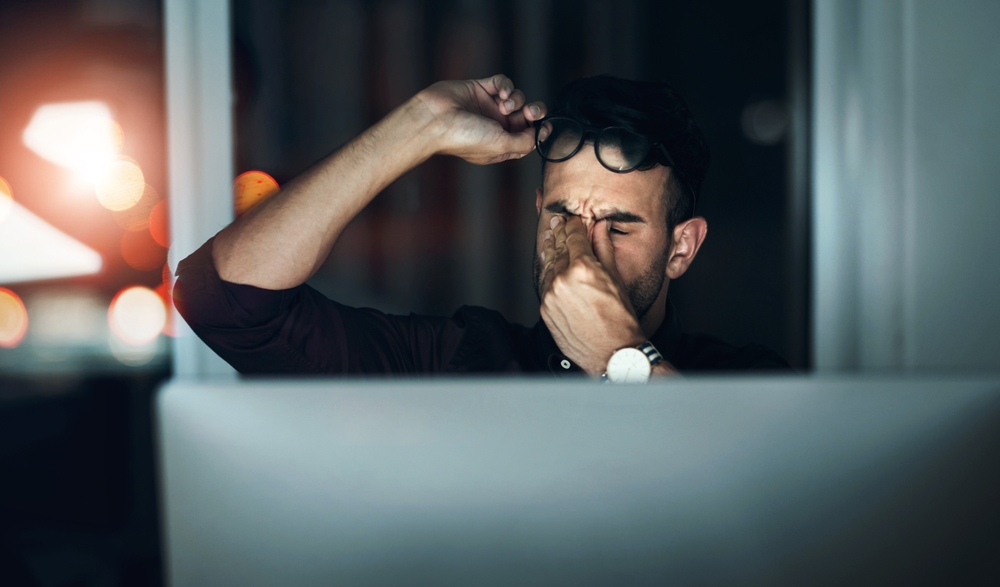
Digital screens have become an integral part of everyday life. Whether at home or work, people are using computers and other digital devices throughout the day. The eyes are continuously exposed to digital screens, from smartphones and tablets to computers.
Unfortunately, prolonged screen time can cause dry eyes and other eye issues. The eye requires moisture to stay healthy and comfortable. Discover the connection between screen time and dry eyes.
Screen Time and Dry Eyes
The eyes need moisture from tears to function effectively. Blinking helps to spread the layer of tears over the eye’s surface. It helps to keep the eyes lubricated and comfortable. When you spend hours in front of a computer or digital screen, your blinking reduces significantly.
This causes an interruption of the natural lubrication process, resulting in dry eyes. Blue light from the digital screen also contributes to dryness. The high-energy light has shorter wavelengths than other light forms. It causes eye strain and dry eye symptoms.
Tips for Digital Eye Strain Relief
There are things you can do to reduce symptoms of digital eye strain, such as:
· Blink often when using digital screens. Reminding yourself to blink will help to keep your eyes moist, preventing dryness.
· Rest your eyes by following the 20-20-20 rule. Every 20 minutes, stare at something 20 feet away for 20 seconds. This will help to reduce strain and relax your eye muscles.
· Use artificial tears to keep your eyes lubricated. Using eye drops regularly helps to keep the eyes moist and comfortable.
· Adjust your screen settings to reduce glare. Optimizing contrast and brightness helps to minimize eye fatigue.
· Using anti-reflective lenses. Wearing eyeglasses with anti-reflective coatings when using the computer can help to reduce glare and prevent eye strain.
· Adjust your lighting. Ensure you use and install proper lighting in your workspace. Avoid dim or overly bright lighting conditions. Use ambient lighting to reduce strain.
· Use digital screen filters. Screen protectors or blue light filters can help to reduce your exposure to harmful blue rays.
· Practice proper posture. Position your digital device correctly to reduce eye strain and prevent neck, shoulder, and back pain.
· Limit screen time before bedtime. This will help to prevent sleep pattern disruptions and alleviate eye fatigue.
Treatment for Dry Eyes
If you have dry eye syndrome, an eye doctor can recommend treatment to relieve your symptoms. Effective treatment will depend on the underlying cause and severity of the condition. Treatment options include:
· Artificial tears.
· Prescription eye drops.
· Punctal plugs.
· Specialized contact lenses.
· In-office procedures, such as intense pulsed light therapy (IPL) and thermal pulsation.
Applying a warm compress over the eyelids can help to soothe the eyes and relieve dryness. It can also help to unblock oil glands, improving tear film quality.
Protecting Your Eye Health
Protecting your eye health can help to prevent dryness. Schedule regular eye exams and ensure you correct any vision problems. Update your prescription to avoid straining your eyes.
Taking regular breaks when using your computer can help reduce dry eye symptoms. Step away from the device and take the time to hydrate, stretch, and rest your eyes.
Maintaining a healthy diet can help to prevent eye dryness. Studies show a diet rich in omega-3 fatty acids can improve tear production, preventing dryness. Stay hydrated by drinking plenty of water throughout the day.
For more on the connection between screen time and dry eyes, visit Eye Center of Brookings. Our office is in Brookings, Oregon. Call (541) 469-6923 to book an appointment today.






